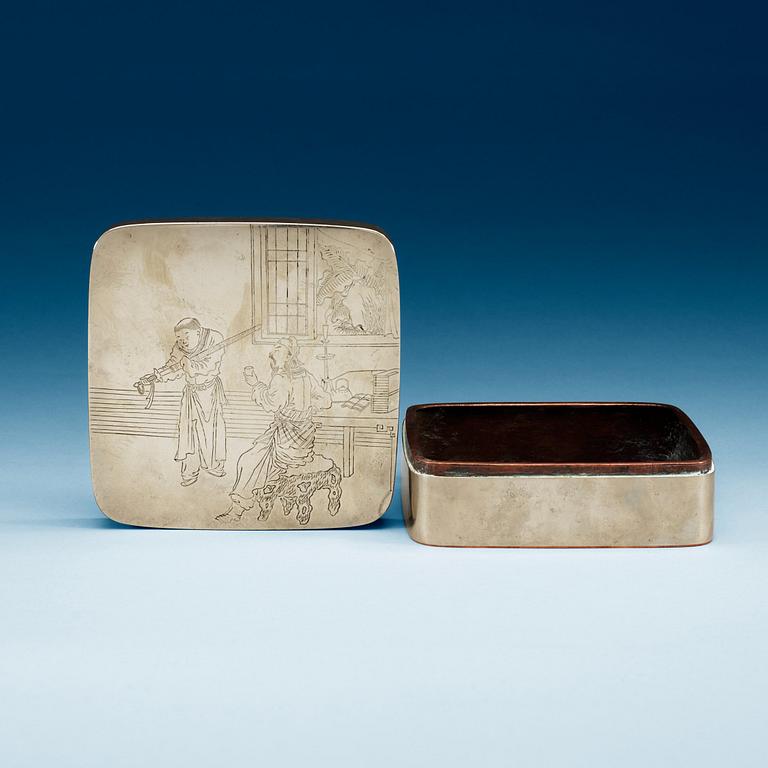ASK med LOCK, försilvrad koppar. Kina, tidigt 1900-tal. Märkning i botten.
Skifferplatta i locket, graverad dekor av lärd man vid sitt skrivbord. Mått 13,2x13,2x5,4 cm.
Slitage.
Proveniens
From the Collection Johan Gunnar Andersson (1874–1960), thence by descent. His Chinese name was An Tesheng 安特生. Andersson was a famous Swedish Archaeologist, paleontologist and geologist, closely associated with the beginnings of Chinese Archaeology in the early 1920’s. His started his career at Uppsala University, participated in the Swedish Antarctic Expedition 1901-1903.
In 1914 he was invited to China as mining adviser to the Chinese government. His affiliation was with China's National Geological Survey (Dizhi diaochasuo) which was organized and led by the extraordinary Chinese scholar Ding Wenjiang (V.K. Ting). During this time, Andersson helped train China’s first generation of geologists, and also made numerous discoveries of iron ore and other mining resources, as well as discoveries in geology and paleontology.
From there he went on to further excavations. They made several important prehistoric finds from the Neolithic period. 1926, the Swedish prince came to visit, at the same time Andersson announced the discovery of human teeth, they were later identified as being the first finds of the Peking Man.
He published numerous books and scientific papers on Chinese archaeology, many in the Bulletin of the Museum of Far Eastern Antiquities. Many finds were shipped to Stockholm for analysis.
In 1926, Andersson founded the Museum of Far Eastern Antiquities in Stockholm, Sweden (in Swedish: Östasiatiska museet), a national museum established to house the Swedish part of the collections from these first-ever scientific archaeological excavations in China. Andersson served as the director of the MFEA until he was succeeded in 1939 by the famous Swedish Sinologist Bernhard Karlgren.
The Chinese part of the Andersson collections, according to a bilateral Sino-Swedish agreement, was returned by him to the Chinese government in seven shipments, 1927-1936. A part of these shipments were showed in 2006 at the Geological Musuem in China, after being lost for decades.



































